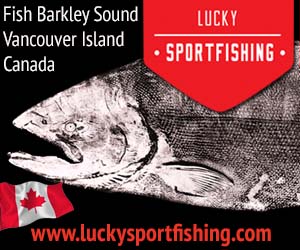New Rules for Columbia River Chinook

The following is a press release from the Washington Department of Fish and Wildlife (WDFW).
Columbia River anglers preparing for the fall salmon season should be aware of several new rules scheduled to take effect when the popular fishery gets under way Aug. 1.
Approximately 960,000 fall chinook salmon are projected to return to the big river this year, well above the 10-year average, said Ron Roler, a Columbia River fishery manager for the Washington Department of Fish and Wildlife (WDFW). However, some coho and steelhead runs are expected to be down this year.
“A big part of the challenge this year is to conserve coho and steelhead, while providing a full fishing season for chinook salmon,” Roler said. “As always, we want to protect wild salmon and steelhead populations, while providing great fishing opportunities for abundant hatchery fish.”
Key changes in this year’s fall fishery on the Columbia River and its tributaries are noted below:
- Steelhead limits: Anglers are limited to one hatchery steelhead per day on the lower Columbia River below Bonneville Dam starting Aug. 1. This restriction is due to low projected upriver wild steelhead returns and will be extended upriver to McNary Dam starting Sept. 1, then up to the Highway 395 Bridge in Pasco beginning Nov. 1. As in previous years, only hatchery steelhead with a clipped adipose fin and a healed scar may be retained.
- Buoy 10 chinook rule: State fishery managers estimate that anglers will catch nearly 48,500 chinook salmon by Labor Day (Sept. 5) in the Buoy 10 fishery, which takes place in the lower 16 miles of the Columbia River. In this fishery, anglers will be required to release wild chinook on Sundays and Mondays to meet federal conservation guidelines for chinook runs listed under the federal Endangered Species Act (ESA).
- Ventral clipped chinook: Anglers may retain chinook salmon with either a clipped adipose or left ventral fin through Dec. 1 from Buoy 10 upstream to Bonneville Dam. Chinook salmon raised for release in the Youngs Bay off-channel fishing zone in Oregon and marked for identification with a clipped ventral fin have been found straying into natural spawning areas elsewhere in the Columbia River Basin. The new rule will enable the recreational fishery to help reduce the number of fish that stray.
- Snake River chinook: The daily catch limit for adult chinook salmon has been reduced to two fish from the Steamboat Landing Dock in Washougal upstream to the Highway 395 Bridge in Pasco to conserve wild ESA-listed chinook bound for the Snake River.
- Coho limit in tributaries: In previous years, anglers were allowed to keep up to six adult hatchery coho salmon in tributaries to the lower Columbia River. This year, with the run projection down 27 percent from the 10-year average, the daily limit will be two adult hatchery fish. As before, unmarked coho must be released. The new daily limit will affect fisheries on the Cowlitz, Deep, Grays, Elochoman, Toutle, Green, Tilton, Cispus, Kalama, Lewis and Washougal rivers.
- Strays on the tributaries: For the first time, anglers will be allowed to keep hatchery chinook and hatchery coho during designated hatchery steelhead seasons on numerous smaller lower Columbia tributaries to remove stray hatchery fish from the spawning grounds.
Fishing regulations in effect throughout the state are described river-by-river in the 2016-17 Sport Fishing Pamphlet. Anglers are also advised to check that site for emergency regulations adopted since the pamphlet was issued.






